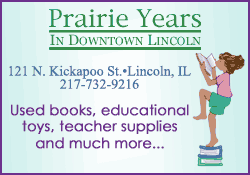|
The
history of the signal quilts dates to the days of slavery, in the
low country of South Carolina. There, some blacks who were planning
to escape their bondage were taught an intricate code of signals
that would help them successfully complete their journey north to
freedom. The signals
were pieced into colorful quilts that were displayed on the
plantations prior to the trip as mnemonic devices, or reminders, of
what they had learned, to increase their chances of success. Because
quilts were such a common household item, they aroused no suspicion.
The signals were "hidden in plain view."
The quilt code
remained a highly guarded secret, passed down through oral tradition
only to those deemed trustworthy. As time passed, fewer and fewer
people remembered the code, and some of those who learned it
considered it no longer important.
The late Ozella
Williams of Charleston, S.C., was one of the people who learned the
code from her grandmother and mother. Childless, Williams tried to
share the code with a niece, who found no value in it. In her old
age, seeking to complete her obligation to pass the code on,
Williams shared the information with Denver writer Jacqueline Tobin.

Tobin teamed with
quilter and historian Raymond Dobard to produce a book, "Hidden in
Plain View," which became an overnight sensation in the quilting
world. The book is available at Lincoln Public Library.
Sue Bidwell of Sew
Many Friends quilt shop, 127 S. Kickapoo St., will give a series of
lessons on preparing signal quilt blocks. All lessons will be
presented from 1:30 to 4:30 p.m. at Sew Many Friends. The shop is handicapped-accessible.
The lessons are for
people who would like to learn about and make the signal quilt
blocks, either to make into a quilt for the display or for their own
pleasure. Quilters will retain ownership of the blocks they make.
Beginning quilters,
as well as those with experience, are encouraged to participate in
both the quilting workshops and the show. One class will be given
for each of the 10 primary signal blocks listed in "Hidden in Plain
View." Because of limited space, each class will be limited to 15
participants, who must preregister.
 [to top of second column in this
article]
|

The fee for each
class is $5, which includes a free pattern and hands-on
instructions. Each person who completes the class will receive a $5
gift certificate good for fabric from Sew Many Friends.
• Participants have
the following choices: Buy a pre-cut quilt block kit at a cost of
$5; or bring pre-washed and ironed fabric and cut the block pieces
at the workshop. Those who plan to cut their own fabric should also
bring a plastic ruler, rotary cutter and mat. Information on the
shades and amount of fabric needed will be available when you
register.
• Bring your own
sewing machine, or bring a quilting needle and thimble and sew by
hand.
• Each participant
also should bring his or her own choice of thread, scissors, a
ripper and a gallon-sized reclosable bag for storing the quilt
pattern and pieces.
The quilt blocks will
be completed in order of ease of sewing, rather than the order of
the code. The first session, on July 14, was on the Bow Tie pattern.
Other lessons have been scheduled as follows:
• Crossroads, Aug.
17; reservation deadline Aug. 10.
• Log Cabin, Sept.
15; reservation deadline Sept. 7.
• Bear’s Paw, Oct.
12, reservation deadline, Oct. 5.
• Flying Geese, Nov.
10, reservation deadline Nov. 2.
• Monkey Wrench, Dec.
14, reservation deadline Dec. 7.
• Drunkard’s Path,
Jan. 12, reservation deadline Jan. 4.
• Double Wedding
Ring, Feb. 15, reservation deadline Feb. 8.
• Wagon Wheel, March
16, reservation deadline March 8.
• The April 19 class will provide tips
for setting the blocks together into a quilt top. Students will be
responsible for quilting or tying their own quilts or having them
quilted or tied.
[Thressia Usherwood,
Lincoln sesquicentennial publicity chairman]
 |